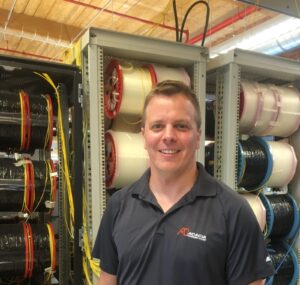
I am proud to announce that I am one of the program chairs for this year’s Signal Processing in Photonics Communications Meeting (SPPCom), which is part of the OSA Advanced Photonics Congress. The event takes place July 24 – 27, 2017 at the Astor Crowne Plaza, New Orleans, Louisiana. SPPCom is one of six concurrent topical meetings that cover multiple aspects of optical data transfer and its technologies.

Signal processing is the foundation of all Acacia products –with design considerations from the optical, analog and digital domain, from the client side interface to ultra-long haul transmission. The Signal Processing in Photonic Communications (SPPCom) meeting is therefore a great conference to be a part of. It covers advances in signal processing for transmitters and receivers, including techniques for mitigating the effects of transmission impairments and non-ideal components/devices, key transmitter/receiver functions, forward error correction, and enabling technologies. SPPCom also includes software-defined networks, applications of machine learning, ultra-high baud rate systems, visible light and free-space-optical communication systems. The SPPCom program will feature 1 tutorial speaker, 23 invited speakers, and 19 contributed presentations.
While I have been invited to speak at several other conferences as well as presented a tutorial on DSP at OFC 2014, this opportunity will mark my first time taking the position of program chair. Though challenging at times, the experience has been overwhelmingly positive. I have had the opportunity to work with various experts in the field of signal processing – my fellow conference chairs and committee members – to create a conference program that reflects the state of the art in signal processing research. The major challenges in building the program were to cover all the different subcategories of this broad field, balance academic and industry contributions, and include speakers from different geographic regions. Looking at the final program I think we did a good job. I for sure am excited to attend the conference and to learn from the many distinguished speakers.
Some of the topics I think are of particular interest are:
- Nonlinear channel mitigation: This is still one of the major challenges in optical communication, and efficient algorithms for mitigating intra- and inter-channel nonlinear effects will be a key feature in next generation coherent transceivers.
- 4D modulation & constellation shaping: Network operations demand ever increasing spectral efficiencies. What is the most efficient way of mapping bits to symbols is still an open question.
- Machine learning & image processing: It is always exciting to learn from adjacent fields and to explore if algorithms can be transferred to improve photonic communication systems.
These different topics show how relevant this conference is to Acacia Communications, as it enables the company to keep abreast of new technologies. Acacia’s innovations and industry-leading products would not be possible without a strong involvement in the research community.
I hope that I will also find some time to get to know New Orleans. This will be my first time to visit The Big Easy, and I am excited to explore its gentle and easy-going way of life, to get a drink at a Jazz bar, and of course to taste the Creole and Cajun cuisine.
If you’d like to learn more about signal processing in photonics communications, register to attend the meeting. If you have questions about the conference or would like to learn more about Acacia Communications, please email me me. I’d be happy to speak with you.
